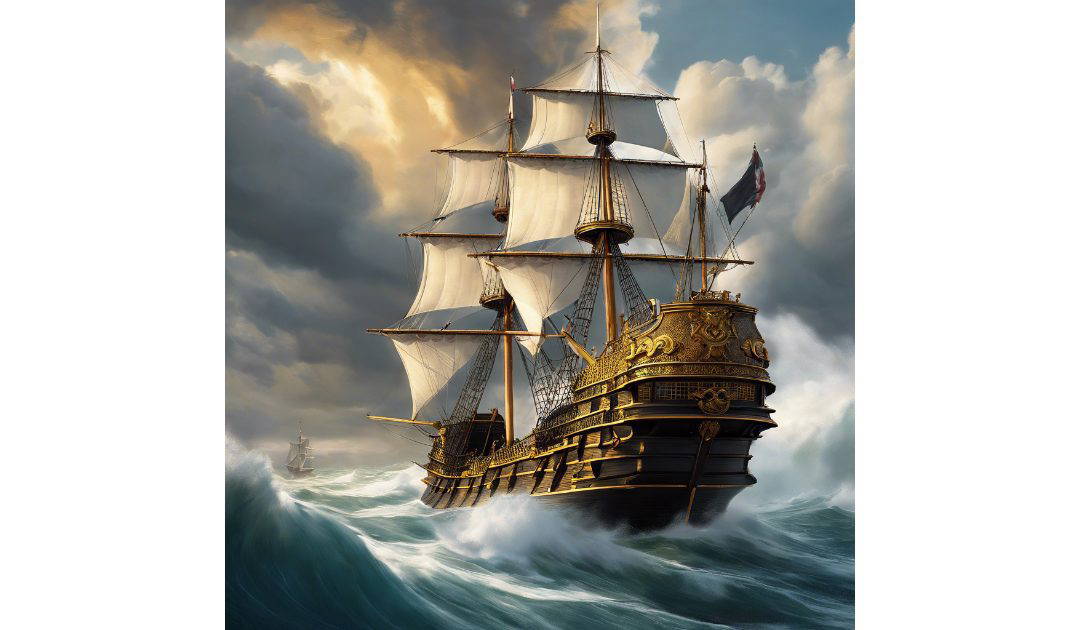On 13th December 1577 Sir Francis Drake set sail from Plymouth on his three year circumnavigation of the globe. It was an extraordinary expedition that cemented his reputation as one of England’s greatest explorers and privateers. Commissioned by Queen Elizabeth I, Drake’s mission was to disrupt Spanish maritime dominance, explore unknown territories, and return with wealth for the crown.
He commanded a fleet of five ships, including his flagship, Pelican (later renamed Golden Hind). Early challenges included storms and internal dissent, leading to the execution of Thomas Doughty, a nobleman accused of mutiny, near present-day Argentina. This decisive action asserted Drake’s authority over the crew.
The expedition navigated the Strait of Magellan in 1578, entering the Pacific Ocean, where violent storms damaged the fleet, leaving Golden Hind as the sole surviving ship. Drake then sailed north along the South American coast, plundering Spanish settlements and ships laden with silver and treasures. These raids angered Spain but delighted Elizabeth I, as England sought to undermine Spain’s imperial dominance.
Drake ventured further north along the Pacific coast, possibly reaching as far as present-day Oregon, in search of the elusive Northwest Passage. Unable to find it, he turned westward across the Pacific, reaching the Philippines and then the Moluccas (Spice Islands). After trading for valuable spices, he navigated through the Indian Ocean and around the Cape of Good Hope at Africa’s southern tip.
The voyage concluded on 26th September 1580, when Golden Hind returned to Plymouth, laden with treasures equivalent to millions of pounds today. Drake became the first Englishman to complete a circumnavigation, following the Portuguese explorer Ferdinand Magellan’s earlier route. Queen Elizabeth I knighted him aboard Golden Hind, solidifying his status as a national hero.
Drake’s circumnavigation had profound consequences. It challenged Spanish naval supremacy, expanded English knowledge of global geography, and demonstrated the potential for privateering as a profitable venture. However, it also strained Anglo-Spanish relations, contributing to the eventual outbreak of the Anglo-Spanish War (1585–1604).
Despite his reputation as a patriot in England, Spain viewed Drake as a pirate. His circumnavigation remains a symbol of English maritime ambition and resourcefulness during the Elizabethan era, marking a pivotal moment in the Age of Exploration.
Of course we should not forget that in 1567 he made one of the first English slaving voyages with his cousin John Hawkins. His importance to me is that it was when reading a biography of him by George Malcolm Thomson that I discovered Sir Anthony Standen and his role as Walsingham’s spy feeding him detailed intelligence on the Spanish Armada, and began thinking about writing The Spy who Sank the Armada.

